This post is continued from Vegan in Nyaungshwe with Strangers.

The next day I woke up in Nyaungshwe (Northern Burma) bright and early to spend the day in a boat. Inle Lake supports a strong workforce of both fisherman and artisan craft workers. The latter put their skills to use in stilt raised workshops along the edges of the lake, where employees always show up to work at precisely the same time a tourist boat docks.
There is a jumping cat monastery on the lake (along with a host of restaurants and budding tourist attractions). I'd already spent most of my time on the lake seeking out cats as I do everywhere, so when we landed at this place I was beside myself like it was Christmas, my birthday, and whatever it is that people celebrate all rolled into one. Only times a million. I mean, I think. The only holiday I've celebrated as grown up is Eurovision, and I couldn't even be bothered with that the last couple of years. Basically I just celebrate cats.
Now that I've discussed cats, it's time for lunch. Our boat captain person drove us to some tables on stilts for lunch (okay, it was a little more elaborate than that – there was a platform and also a cat), where I had my first green tomato salad in Myanmar. Tangy with lime and nutty with sesame and peanut, it didn't taste any different to Burmese red tomato salads (but it was pretty).
In Burma, “salad” is a word that translates to “mixed by hand” and preferably these dishes are a balance of hot, sour, and salty (as a foreigner, however, I found it necessary to ask for chillies) blended with sesame and/or peanut oil. Fish sauce is often a component, but the concept of vegetarian is well known so leaving it out is never an issue. Like everywhere else in Myanmar, being vegan around Inle Lake is not difficult.
Most menus have a section of various stir fried vegetables, which are fine as salty fillers with rice, but nothing to write home about.
My boat friend ordered the green bean salad, which like most Burmese salads featured a similar dressing but with a variation in texture. The tomato salad was light and soft, the bean salad crunchy and firm. Both equally delicious.
Who wants to see another picture of a cat?
Nyaungshwe has more to offer than the lake, including some excellent cycling excursions. One of them is a winery. Nothing about that could go wrong.
Yes, a winery. A place with wine. I'm not sure how such a warm climate manages it, but the sauvignon blanc was drinkable (piss dry, sour grapefruit) and the pinot noir wasn't the worst I've had (cherry liquorice, though I prefer strawberry undertones). It's impossible to talk about wine without sounding like a tool.
There were no cats at the vineyard, but the menu did have some vegan friendly options. I'd just eaten a bowl of dirty noodles that tasted of fried and salt, but didn't want a completely food free table with the five empty glasses I had (it was only a tasting, I swear) so I ordered a light snack of crispy fried tofu.
Tofu in Myanmar rarely refers to soy bean curd, but rather to Shan tofu, a Burmese ingredient made from chickpea flour. Many eateries also sell a thin and crispy fried snack, crunchy like crisps, which tends to be served with ketchup and/or sweet chilli sauce. Often some will land on your table even when you don't request it, much like bread roll and oil might at an Italian restaurant.
I don't remember anything else, but let's head back to the lake since it's just so beautiful.
Burmese Sev
Sev readily available in supermarkets and Asian grocers, but it's also easy to make at home. To eat it Burmese style, serve with ketchup and sweet chilli sauce.
- 115 grams (loosely packed 1 cup) gram/chickpea flour
- ¾ teaspoon salt
- ¼ teaspoon ground turmeric
- 15 millilitres (1 tablespoon) vegetable or peanut oil, plus enough for 1-2 inches in deep fry pan
- 75 millilitres (¼ cup + 1 tablespoon) water
- Ketchup and/or sweet chilli sauce to serve (optional)
- Heat a wok or saute pan with a depth of at least 1-2 inches vegetable oil to medium heat.
- Mix the salt, flour, and turmeric together in a large heatproof bowl. Add the tablespoon of oil and mix until the texture is like crumbs. Add the water and make a smooth dough (when handling it with your hands it may seem super sticky, but oiling your hands will help).
- Unless you have a sev maker, you’ll need to improvise the shape. You can use a spritz cookie gadget, a very strong and sturdy icing tube (not a bag – pretty sure it will bust), or roll thin snakes of dough. The dough is very stiff, so you will need to put your back into any pressing. Whatever you do, try to make the sev as thin as possible.
- Deep fry for 5-10 minutes, flipping if necessary, until the sev is golden but not burnt. Remove to a few layer of kitchen roll to drain and cool. After about fifteen minutes, the sev will harden and be ready to eat. Otherwise, store in an airtight container.
- By: Kip
- Makes enough for one or two people to snack
- Cuisine: Indian Burmese


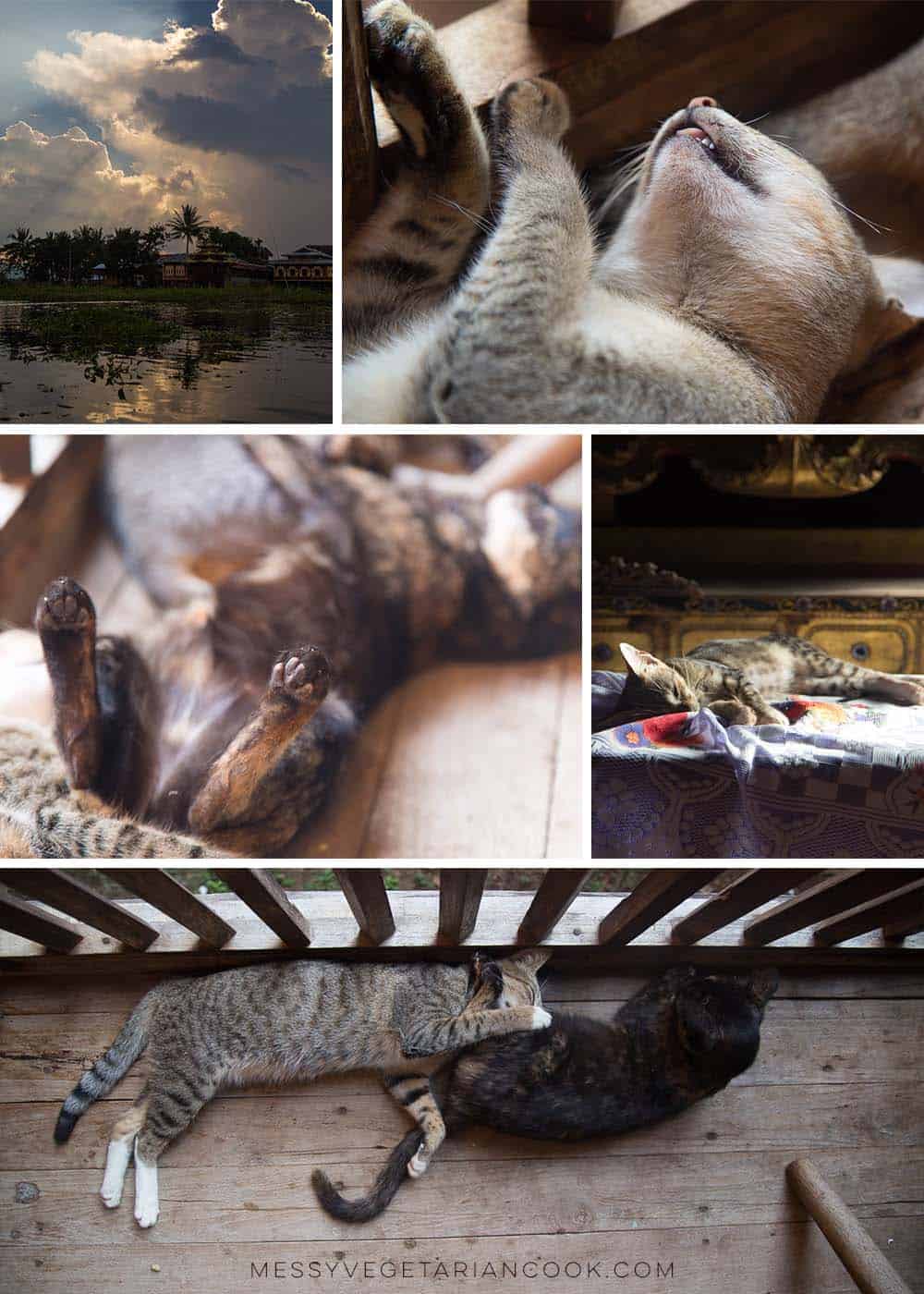


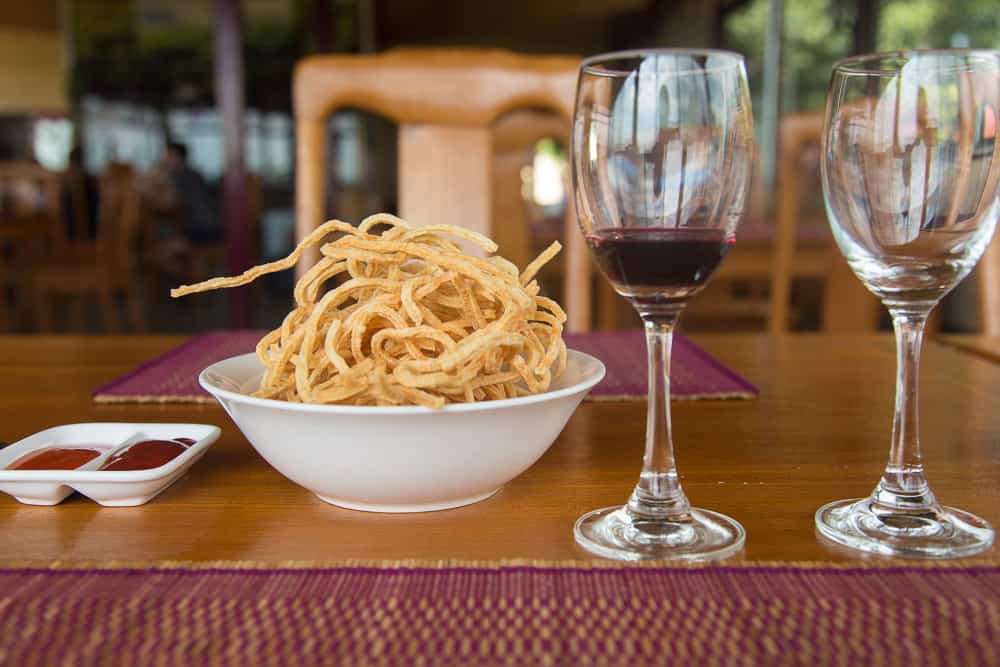
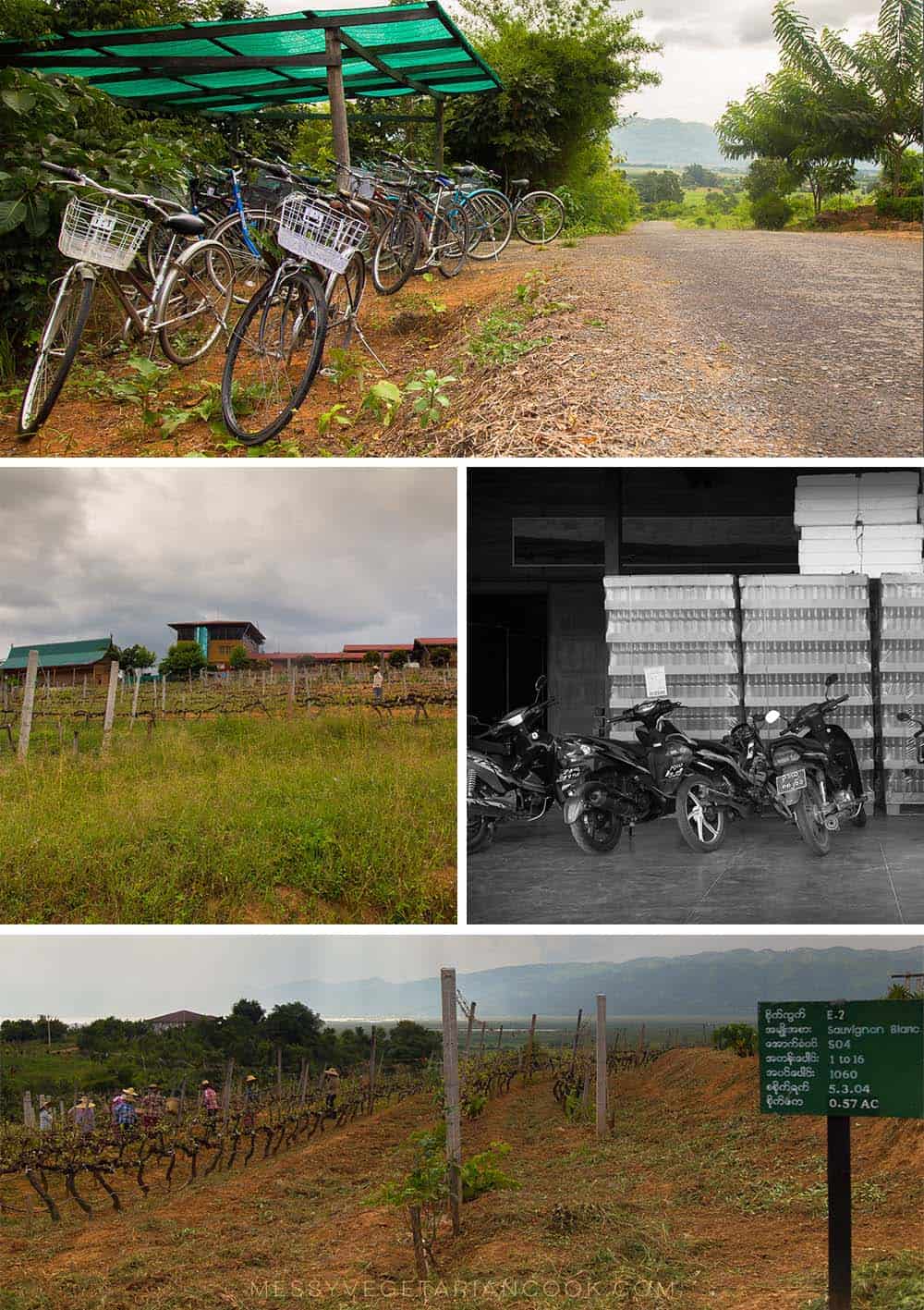

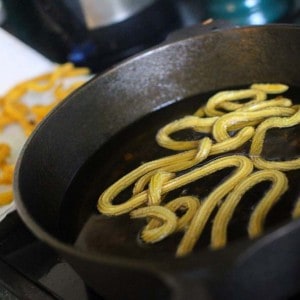


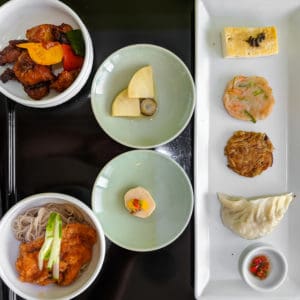
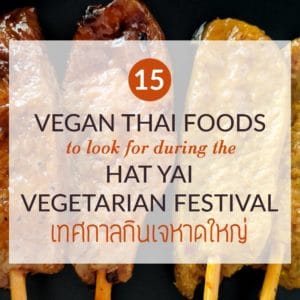
Leave a Reply